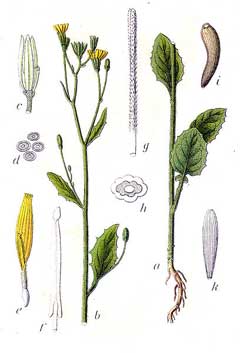
Nipplewort, Common nipplewort
Latin Name: Lapsana communis
USDA Hardiness: 4-8
Native Range: TEMPERATE ASIA: Iran, Iraq, Israel, Jordan, Lebanon, Syria, Turkey, Russian Federation-Ciscaucasia (Ciscaucasia), Armenia, Azerbaijan, Georgia, Russian Federation (Omsk, Tomsk, Tyumen (south)) TROPICAL ASIA: India (Jammu and Kashmir), Pakistan EUROPE: Denmark, Finland, United Kingdom, Ireland, Norway, Sweden, Austria, Belgium, Switzerland, Czech Republic, Germany, Hungary, Netherlands, Poland, Slovakia, Russian Federation (European part), Belarus, Estonia, Lithuania, Latvia, Moldova, Ukraine (incl. Krym), Albania, Bulgaria, Bosnia and Herzegovina, Greece, Croatia, Italy (incl. Sardinia, Sicily), North Macedonia, Montenegro, Romania, Serbia, Slovenia, Spain (incl. Baleares), France (incl. Corsica), Portugal AFRICA: Portugal (Madeira Islands), Algeria, Morocco, Tunisia
Edibility Rating: 2 / 5
Medicinal Rating: 0 / 5
Region:
Family:
Plant Type:
Medicinal Uses
Edible Uses
Edible Parts: Leaves Shoots | Edible Uses: Young leaves and shoots - raw or cooked[2, 5, 17, 100]. They are best harvested before the plant comes into flower[9]. The leaves can be added to salads, cooked like spinach or added to soups and casseroles[9, 183]. They have a bitter or radish-like taste[183].
Cultivation
A fairly common garden weed, nipplewort will maintain itself in the garden so long as it is given some disturbed soil in which to self-sow. It is a fairly tolerant plant that succeeds in most soils, so long as they are not too acid, and dislikes heavy shade. It was at one time cultivated as a vegetable[17].
Known Hazards
None known
Habitats
Waste ground, roadsides and walls, avoiding acid soils, in full sun or semi-shade[5, 9].